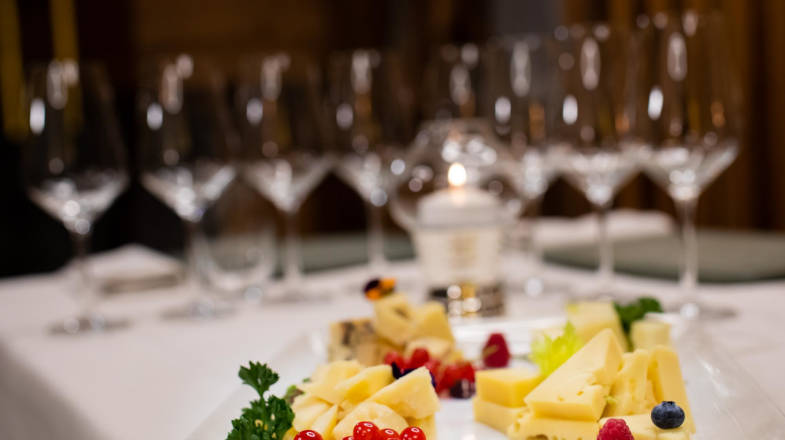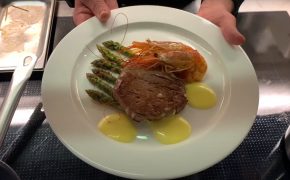Wine Tasting: Discovering the History, the Territory and the Aromas of the Val d’Aosta Wines
Despite being a mountain region, Valle d’Aosta has a wine-growing history that is as old as it is rich and interesting.
The wines that are produced here have unique and particular characteristics, which distinguish them both from the neighboring Piedmontese wines and from the more distant southern wines.
We discovered this a few days ago, thanks to the wine-tasting activity that we have been offering here at the hotel beginning this year.
Guided by Matteo Zanetti, the owner of the Excelsior Planet and AIS certified sommelier, we immersed ourselves in the fragrances and aromas of 4 completely different wines, different in origin, type of grapes and in much more.
Do you want to know how it went?
Well, now we will tell you!
How is Wine Tasted?
The very first thing you learn during the process of wine tasting is how to taste a wine.
That’s right, because drinking it is not enough.
To really understand the essence of a wine, there are specific steps that every good sommelier knows and that we too will try to follow today.

Looking at it:
Before drinking it, a wine must be admired.
Its colors, the traces it leaves on the glass and the nuances can reveal many things about the quality and characteristics of the wine.
Smelling it:
The sense of smell is one of the human being’s most powerful senses, and a sense that is very useful when you are talking about wine. For this reason, after admiring its appearance, you have to smell its fragrances and aromas.
Tasting it:
Finally (at last!), the moment of tasting arrives. So you can discover whether the hypotheses you made earlier via your eyes and nose truly correspond to what you taste in your mouth.
A Comparison of Wines from the Valle d’Aosta and from the Piedmont Region
Matteo explains to us that today he has prepared a tasting “by contrast” for us.
A type of wine tasting where you try to understand the qualities, fragrances and peculiarities of each wine by comparing it with another wine. They are compared and the big differences are found.
In particular, the route he proposes to us is a journey between Valle d’ Aosta and Piedmont. A very close region, but one whose wines, as we will see, are completely different from those of the Valle d’Aosta.
Let’s start with the white wines.
First Wine: Piedmontese Arneis
The first wine that is poured into our glasses has a light color, almost tending towards gray. Matteo explains to us that Arneis is a typically Piedmontese grape whose plant is rather difficult to manage.

The fragrance is fresh, reminiscent of freshly-cut fruit and grass.
In your mouth you can feel a bitter and herbaceous taste.
Second Wine: Petite Arvine from the Valle d’Aosta
A typical white wine of the Valle d’Aosta, the Petite Arvine that shines in our glass has a color similar to that of the Arneis, but more intense and brighter.
The fragrance is also more intense, with important aromatic characteristics.

The reason, Matteo explains to us, is that Valle d’Aosta wines are mountain, alpine wines.
Their characteristic is that of growing in an environment with a wide temperature range between day and night: a particularity that favors the development of an intense aroma in wine.
That is why alpine wines are usually more fragrant than those of central and southern Italy
When tasted, the Petite Arvine wine is a more corpulent and full-bodied wine, with slightly citric flavors.
After two glasses of wine, our head starts to turn a bit … luckily, there are several trays in front of us full of attractive appetizers to taste!
Cured meats, cheeses and croutons, perfect to accompany us during this tasting.

So, after filling our stomachs, we can continue our wine journey. It’s time for the reds!
Third Wine: Valle d’Aosta Fumin
The first wine that Matteo offers us is Fumin, a Valle d’Aosta red wine with a ruby red color.
Also in this case, an intense fruity aroma reaches our nose, reminiscent of that of cherries or cooked plums.
But when tasted, the surprise comes: Unlike the whites, in this case we do not find the same flavors on our palate that its fragrance had led us to expect.

Fourth Wne: Piedmontese Nebbiolo
We end the tasting with an important wine: Nebbiolo.
The color is paler compared to that of the Fumin, with elegant garnet-red reflections.

Even the fragrance is more delicate. It reminds us of dried roses.
But on tasting it, we get another surprise: the flavor is completely different from what our nose had suggested!
In our mouth, Nebbiolo is much more tannic and with an interesting complexity. In addition to fruit, a spicy taste hits us. There are those who taste chocolate, others pepper, and yet others find a taste of tobacco.
Our tasting is now over.
We learned how to taste and analyze a wine.
We discovered how wines from two geographically very close regions can still have very different characteristics.
Above all, however, we had fun and drank excellent wines!
Do you want to know more or book your wine tasting? Fill in the form below or check our website!
Our wine tastings are reserved for hotel guests.










